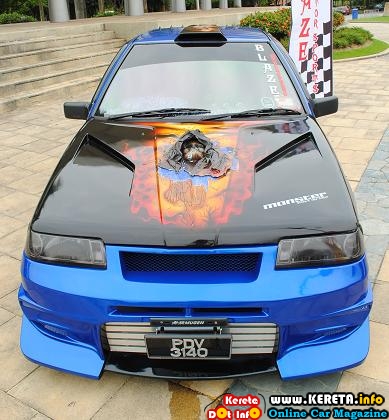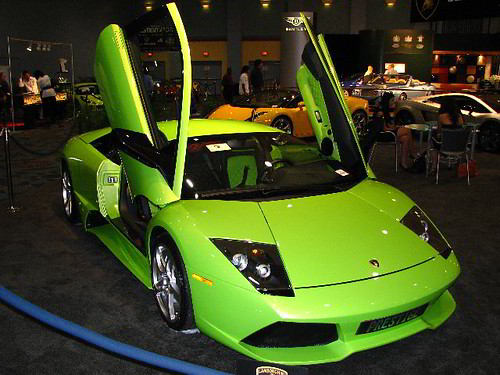|
|
|---|
Sunday, October 18, 2009
Lithium and REE: Electric bikes are all green (colors vary) TNR.v, CZX.v, SQM, ROC, FMC, AVL.to, RES.v, QUC.v, WLC.v, CLQ.v, RIMM, GOOG, AAPL, BYDDY
Posted by andre at 3:27 AMEvery new electric bike needs an electric motor and a lithium pack. Powerful light weight and low volume electric motors are made with rare earth magnets. Old technology with lead based batteries gives its way to green lithium one. Rare Earth Elements became a fast growing market in Asia and now this trend comes to the West as well. REE investment theme is catching up in USA and Canada with the rising demand for strategic commodities.
"ElectricBike: China – Electric bicycles are fast becoming the transport of choice among China’s population. Last year, the Chinese bought 21 million e-bikes, compared with 9.4 million cars. While China now has about 25 million cars on the road, it has four times as many e-bikes."

"SHANGHAI - It's a simple pleasure, but Xu Beilu savors it daily: gliding past snarled traffic on her motorized bicycle, relaxed and sweat-free alongside the pedal-pushing masses. China, the world's bicycle kingdom — one for every three inhabitants — is going electric."
Lithium-ion manganese (LiMh) - the saferst and fastest growing battery system for electric vehicle applications; offers high-energy density and low weight. Protection circuits needed to limit voltage and current. Applications include notebook computers, cell phones, cars and ebikes. High current versions are available for power tools and medical devices. Easy to recycle and reuse. Be careful with other types of lithium as some types are untested and have the potential for fires.
36 volt vs. 24 volt36 volt systems boast faster speeds, quicker acceleration, greater range and better hill climbing capability than 24 volt systems. 24 volt systems are typically used on slower models that require pedal assistance to operate. Recharging battery packs Simply plug your battery pack into any standard 110 volt wall outlet. You can leave the battery pack on your ebike or take it off on most models. Charging takes about four hours and costs just pennies per charge. Safety circuitry guarantees that the battery pack cannot be overcharged.
Maintaining battery packs Plug in your battery pack after every use. Lithium batteries are memory-free batteries and do not require a full discharge before recharging.
Life of the battery pack
36 volt vs. 24 volt36 volt systems boast faster speeds, quicker acceleration, greater range and better hill climbing capability than 24 volt systems. 24 volt systems are typically used on slower models that require pedal assistance to operate. Recharging battery packs Simply plug your battery pack into any standard 110 volt wall outlet. You can leave the battery pack on your ebike or take it off on most models. Charging takes about four hours and costs just pennies per charge. Safety circuitry guarantees that the battery pack cannot be overcharged.
Maintaining battery packs Plug in your battery pack after every use. Lithium batteries are memory-free batteries and do not require a full discharge before recharging.
Life of the battery pack
Lithium-ion manganese batteries typically can be fully charged and fully discharged 500 to 1000 times which translates to 10,000 to 20,000 miles with average usage. Lead Acid packs are only good for about 100 full charges.
"Ride up steep hills without huffing and puffing!"
"Hammer at 20 mph without breaking a sweat!" At the recent Interbike trade show in Las Vegas, an explosion of companies touted the Lance Armstrong-like powers of the electric bike -- a pedal-powered bike with an electric motor for extra speed when you need it. Although E-bikes haven't caught on in the United States as they have in Europe and Japan, makers say high gas prices, the obesity crisis, better lithium-ion rechargeable batteries and a wave of green consciousness make them right for the times. This review includes two styles of electric bikes: "pedal-assist," in which the rider must keep pedaling to actuate the engine, and "throttle," in which the motor can work independently.
Roy M. Wallack Stealth electric bikeTrek 7200+:
Electric-assist, hybrid-style 24-speed bike with large-road-bike-size wheels, suspension fork and seat post, rear-hub engine and slide-in battery rack. Bike must be pedaled for the engine to work.
Likes: It looks and feels like a normal bike, until you turn on the quiet, smooth engine with its four power-acceleration settings that accelerate your own pedaling input by 25%, 50%, 100% and 200%. As with all the bikes reviewed here: The more you pedal, the longer the 36-volt lithium-manganese battery lasts. The 7200+ is also "regenerative," meaning that it recharges somewhat with braking and can be set to regenerative mode while on downhills. Claimed mileage for a single full charge, with pedaling, is 40 miles. Recharging is relatively fast: 90% charge in 2 1/2 hours, 100% in 3 1/2 hours. The 6-pound battery slides out of the rack for remote charging. The 7200+ weighs 45 pounds, light as electric bikes go, and is the low end of Trek's three-bike Plus electric line. For commuting, go to the fender- and disc-brake-equipped Valencia+ ($2,500).
Dislikes: None.
Price: $2,309. (800) 313-8735; http://www.trekbikes.com/.
Instant Armstrong
Currie Technologies iZip Express: Twenty-six-inch-wheel bike with suspension forks and seat post, a giant in-frame battery, and a powerful 750-watt / 1-horsepower engine in the rear hub.Likes: The giant motor leaves you feeling supercharged. Working moderately hard (not all-out), I went 25 mph up a long hill in a head wind. The 36-volt lithium-ion battery has five levels of assist; claimed range on a full charge is 31 miles on high-power mode, 45 miles on standard mode, and more than 50 on economy mode. Top speed on flat ground with minimal rider pedaling is 20 mph. Currie Technologies is one of the country's biggest E-bike distributors. This is its highest-end bike.
Dislikes: iZip is heavy, takes 6 to 8 hours to recharge, and isn't cheap. Price: $2,999. (800) 377-4532; http://www.currietech.com/.
Throttle-twisting econo-cruiser
Pedego: Comfy, low-slung, relatively low-priced six-speed cruiser designed for hill-averse, nonathletic baby boomers. It has big balloon tires, a rack battery and a rear-hub engine controlled by a hand throttle that does not require pedaling.Likes: Great fun, cool looks, good options. Unlike the previous "pedal-assist" test bikes, you can choose whether you want pedal-only, throttle-only or both at once. It's great not to pedal when you don't want to and helpful to know exactly where you are in terms of effort. With the seat set back and low from the cranks, the bike has a comfy, erect-back seating position. The removable, 36-volt, 500-watt lithium battery pack recharges relatively fast: 80% in one hour and 100% in four hours. Speed governed to 20 mph (motor only -- faster if you pedal), so legal on bike paths. By far the lowest price of the group.
Dislikes: Not great at standing hill-climbing position because of the relaxed seating position and high handlebars. Heavy at 60 pounds. Price: $1,595. (949) 336-8333; http://www.pedego.com/.
Mini motorcycle
UltraMotor Metro: Aluminum, full-suspension, seven-speed commuter with small (20-inch), wide (3-inch) tires, rear-hub engine, a hand throttle and a lithium-ion battery pack hidden within the scooter-style frame.Likes: Like the Pedego, it has a comfy, fun feeling and a 36-volt, 500-watt motor that requires no pedal assist to go 20 miles at 20 mph; greater speeds can be attained with pedaling. Range is 40 miles with pedal assist. Adding a second battery pack can double the range. Includes a real-time state of charge indicator.
Dislikes: Pray if you have to carry it up stairs; it's 73 pounds. Price: $2,700. (415) 693-3110; http://www.ultramotor.com/.
Also of note
Other good bikes tested but not for sale until next month include:
KilowattBikes Commuter: A relaxed-geometry pedal-assist, this seven-speed commuter bike has a lithium-ion battery that'll last 25 to 40 miles with pedaling. $2,400; (817) 334-0071; http://www.killowattbikes.com/.
Sanyo Eneloop: A pedal-assist three-speed bike on sale for several years in Japan that has a light, regenerative 3 1/2 -pound lithium-ion battery with a very fast recharging time of 3 to 3 1/2 hours. It gets a claimed 37 to 46 miles per charge on flat ground, up to 40 in the hills, and 16 when carrying a heavy load. $2,299; (800) 858-8442. Wallack is the co-author of "Bike for Life: How to Ride to 100." Roywallack@aol.com"
Subscribe to:
Post Comments (Atom)

















0 comments:
Post a Comment